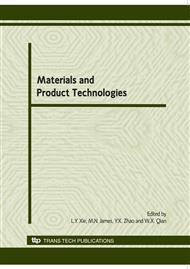p.364
p.369
p.374
p.379
p.384
p.389
p.394
p.399
p.404
The Application of MARS on Crashworthiness Improvement
Abstract:
Surrogate model produced by using multivariate adaptive regression spline (MARS) approach takes the form of an expansion in a set of basis functions which are selected from data. This approach is especially useful in the case of having no advance understanding of the parametric model. As for MARS procedure, the adaptive adjustment is used frequently to best fit the data optimally. In this paper, the adaptive adjustment is realized by using Matlab programming language and provides support for MARS procedure. Taking crashworthiness improvement for example, the program is applied to produce surrogate model for peak acceleration, and then the optimization is carried out based on this model. The results indicate that the surrogate model constructed by MARS approach can predict peak acceleration precisely and therefore can provide instruct for crashworthiness improvement.
Info:
Periodical:
Pages:
384-388
Citation:
Online since:
June 2010
Authors:
Keywords:
Price:
Сopyright:
© 2010 Trans Tech Publications Ltd. All Rights Reserved
Share:
Citation:


